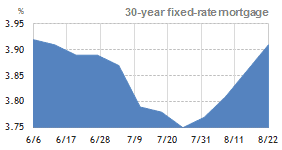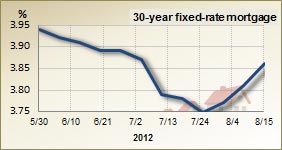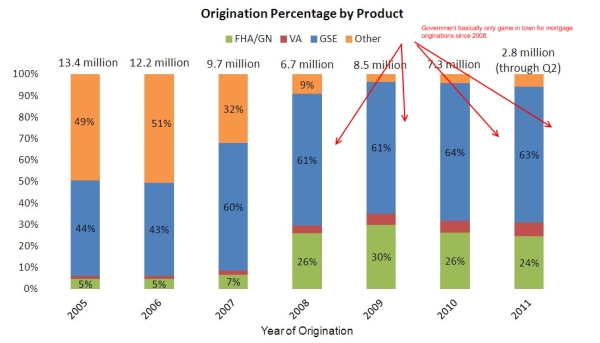Housing market snapshot
Just how low have mortgage rates plunged? In the week that ended July 26, the average rate on a 30-year fixed-rate loan was 3.49%, according to Freddie Mac survey data. Sound low? It should. The rate on that same loan was an average of 4.55% last July. As previously mentioned, tight housing supply helped constrain home sales in June. U.S. existing-home sales declined to 4.37 million in June, down 5.4% from 4.62 million in May. However, that pace is still 4.5% higher than the 4.18 million sold in June of last year.
“Despite the frictions related to obtaining mortgages, buyer interest remains solid,” says Lawrence Yun, the NAR’s chief economist. “But inventory continues to shrink, and that is limiting buying opportunities. That in turn is pushing up prices in many markets,” as is a reduced supply of lower-priced distressed listings. Prices increased the most in the West – 13.3% year over year – due to short supply of affordable and mid-tier homes.
Nationwide, the median existing-home price was $189,400, up 7.9% from June 2011. June marked the fourth back-to-back increase in monthly home values.
What to do when a seller misleads you
Buying Advice received a question recently from a Pennsylvania reader who discovered a huge mold problem in the attic of a home he had purchased. It's a problem he says was covered up by an unscrupulous agent who had purchased the property to flip
.
This appraiser had discovered that the home had a huge mold problem in the attic. It had been reported to the previous owner’s insurance company in a weather-damage claim, but was ultimately shot down when it was found to be the result of a poorly built addition.
“My question is: I am concerned I am stuck with this problem and now my family is having serious health problems. I feel like I was sort of misled and not fully informed by the real-estate agent investor … He actually had the attic entrance crawl space covered with drywall where I did not even know there was an attic to inspect."
The key question is whether the agent/investor who sold the home knew about the problem. If he did, he had the legal responsibility to disclose this information to the buyer in writing. In fact, he is doubly responsible, she says, because most state laws — including Pennsylvania’s — require this disclosure both between property sellers and buyers and between selling agents and buyers.
Of course, sellers don’t necessarily know everything about their homes, and they aren't expected to disclose what they don't know. But, in this case, the agent drywalled over the attic entrance, so he not only knew about it but took steps to conceal it.
The buyer/current owner should hire a lawyer and sue the seller. The claim would be that the seller failed to disclose something that should have been disclosed and possibly committed fraud by keeping the buyer from discovering the mold independently.
It is recommended that the reader file a complaint with the state agency regulating real-estate agents. Just the threat of having his real-estate license revoked may prod the seller to compensate the current owner. Mold problems such as this one illustrate the need for a good home inspection with every purchase. It’s not clear in this case, however, if an inspection was conducted or if the inspector didn’t find the problem, as inspectors aren’t necessarily expected to look behind walls.
It’s not clear whether an inspector could be at fault for missing the problem - that depends on several factors, including local standards.
 In real estate, a deal is a deal, and the terms "short sale" and "real estate owned," or "REO," are marketing buzzwords designed to lure bargain-hungry buyers.
In real estate, a deal is a deal, and the terms "short sale" and "real estate owned," or "REO," are marketing buzzwords designed to lure bargain-hungry buyers.




















